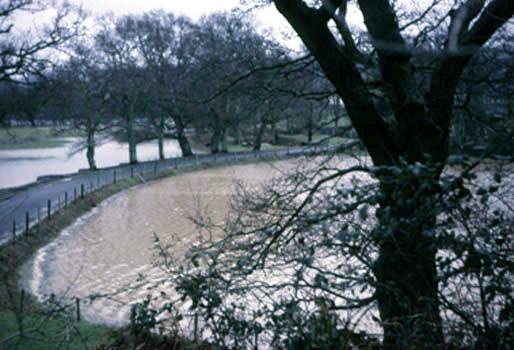
It’s one of those funny things, I think, that demonstrate some of the limits of human perspective that we tend to look at spaces like the estate and describe them as a natural environment because they contain trees, grass, wildlife etc. and they don’t often change drastically in a short space of time, just gradually over lifetimes.
Actually, the estate is a highly designed environment shaped by human activity for as long as we’ve been around (check out the archaeological finds for a sense of that) and there’s very little about it that’s entirely natural – it’s almost always a balance between nature and people.
Consequently one of the first steps when looking at how Queen’s Marsh might be returned to a previous wetland state was to try and discover what people had done to it over the generations to stop it from being a wetland in the first place.
Gallery: Archive history of Queen’s Marsh and Bidwell Brook
Some things one could think might have had an impact but no one knew what it might have been, such as the use of the mill further up the stream. At a very basic level we also just needed to know where things might be found in the field so we didn’t go digging through power lines, sewage pipes or hordes of Viking gold (we wish).
Lastly, we needed evidence that suggested how the field and Bidwell Brook alongside it may have behaved, what it was probably like before it was altered to help indicate the potential for what it could be returned to, as well as how it was impacted by extreme weather in the past so we can plan for how it might cope with such events in future.
We made an appeal to the public which was incredibly helpful (although lead to much debate on the travelling habits of Queen Elizabeth I) but we also raided the Dartington archives.
The Dartington Hall Trust has two sets of archives, one set for the really quite a while ago information and one for the information that is within the last few decades. Ably assisted by Yvonne Widger, Archive and Collection, we searched for key terms, periods of time, sometimes with a clear idea of what we were looking for and sometimes without knowing what might turn up at all just following our noses for items which might be relevant.
Until the feasibility study is finished at the end of this month it’s hard to say what of the information we found was of any use at all but as I enjoyed looking through it all myself I thought others might also be curious to see as well.
I liked these documents for their insight into the time in history from which they come, for actually seeing something which Leonard Elmhirst had written or photographed himself and for the things that never change, such as the disagreements over approach or cost, but I warn you this collection of items is also frustrating for many of the same reasons and for the questions it raises and often leaves unanswered.
Harriet Bell (previously food & farming manager at Dartington Hall)
P.S. Thank you again to the public for their responses which can be read here.
